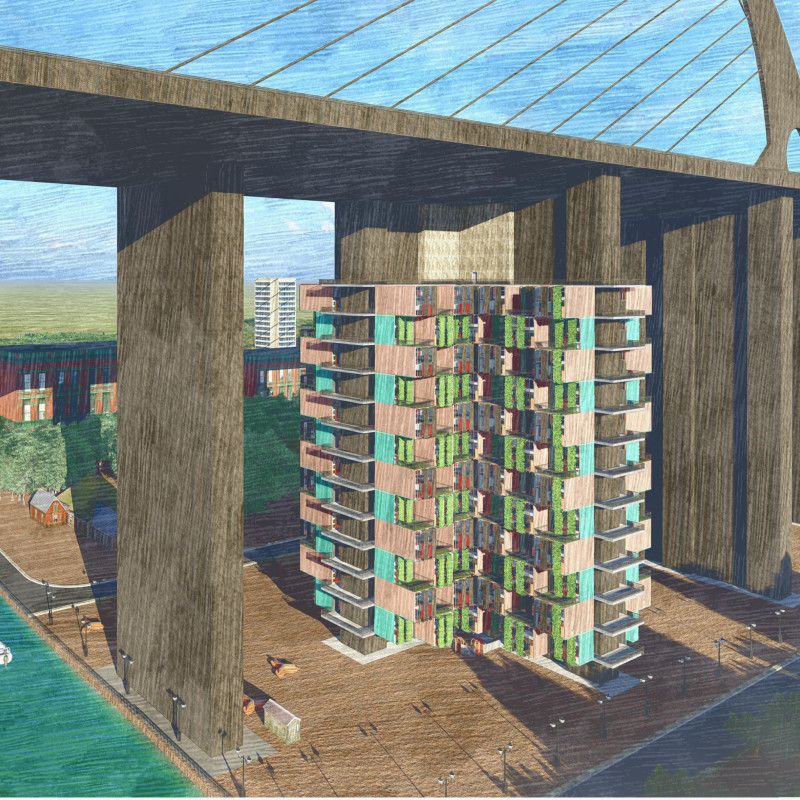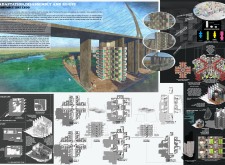5 key facts about this project
The core idea behind this project is to create an architecture that is both flexible and sustainable, allowing living spaces to be constructed, altered, or dismantled with relative ease. This modular framework not only promotes efficient use of space but also acknowledges the potential for future modifications according to the evolving needs of its residents. The design represents a harmonious relationship between built environments and their surroundings, as the housing units are thoughtfully integrated into the landscape, enhancing the connection between urban life and nature.
From a functional perspective, the project serves multiple purposes. It addresses the need for affordable housing while fostering a sense of community among its inhabitants. The modular units include various layouts designed for different demographics, ranging from single occupancy to family-oriented spaces. This versatility ensures that the project meets the diverse needs of a multifaceted urban population, encouraging social interaction within a communal setting.
The unique design approaches seen in this project are particularly noteworthy. One of the key aspects is the use of existing infrastructure, a method often referred to as adaptive reuse. By constructing housing pods beneath and around the bridge framework, the project minimizes the footprint required for new construction and maximizes the use of already available urban space. This innovative strategy not only conserves land but also takes advantage of the elevated position to provide residents with expansive views of the city and surrounding landscape.
Materiality plays a crucial role in the project's success. A careful selection of materials highlights sustainability and functionality, with reinforced concrete forming the structural backbone of the units, ensuring stability and durability. Prefabricated modular panels made from sustainable components facilitate rapid assembly and disassembly, allowing for flexibility in design. Extensive use of glass throughout the units invites natural light, creating bright and open living spaces. Additionally, wood accents in both interior and exterior finishes add warmth and aesthetic appeal, enhancing the overall living experience.
Attention to spatial arrangement is evident in the design, as architectural plans illustrate a meticulous approach to layout and organization. The sections reveal well-considered dimensions and proportions, ensuring privacy for residents while promoting communal spaces that encourage neighborly engagement. The thoughtful positioning of each unit aims to optimize natural ventilation and light, contributing to a healthier living environment. The integration of these elements reflects a design philosophy that places the well-being of residents at the forefront.
Overall, this architectural project represents a significant step towards addressing urban housing challenges while embracing principles of sustainability, community, and adaptability. It highlights the potential of innovative design approaches to reimagine urban living in response to contemporary issues. Readers are encouraged to explore the architectural plans, sections, and designs further to gain deeper insights into the project and its unique architectural ideas and methodologies. Engaging with the detailed presentation of this design can provide valuable perspectives on the future of urban architecture and the possibilities of adapting existing infrastructures for new uses.























